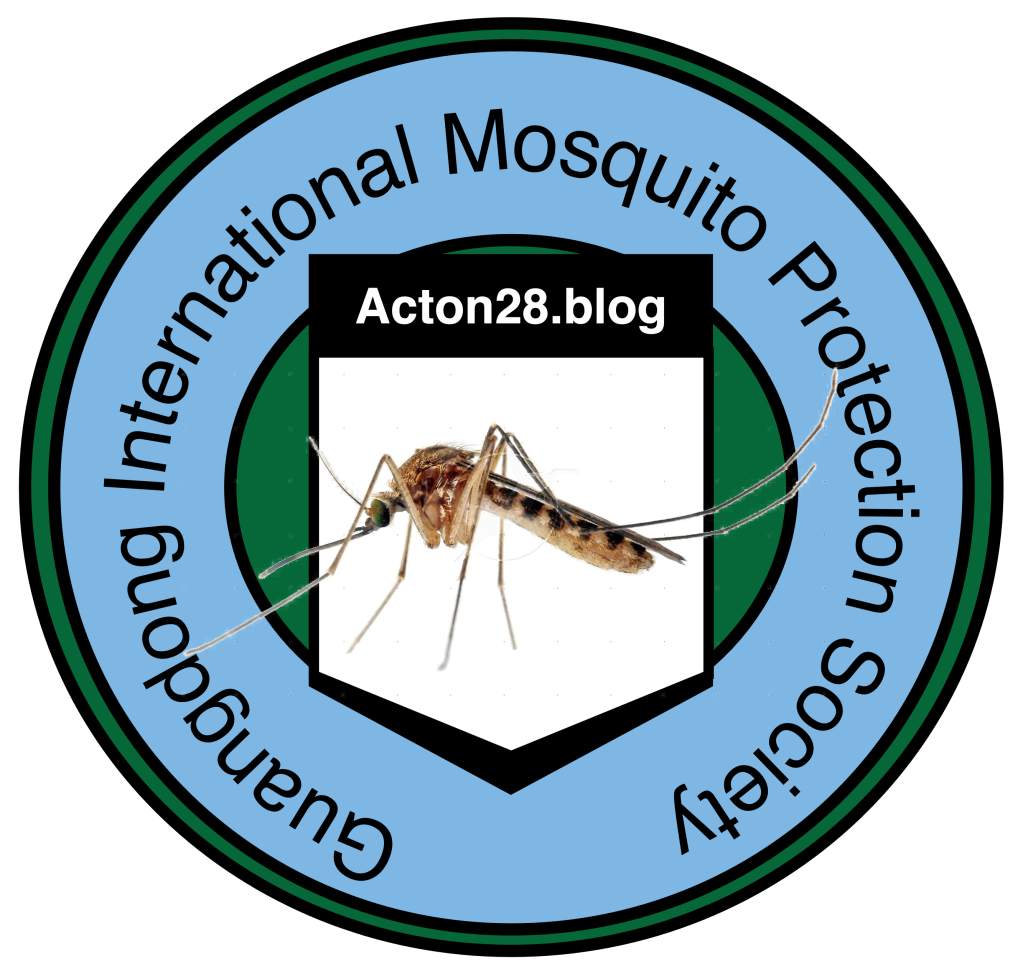Good evening.
The sequel to yesterday’s post involves the sudden deaths of five winged attackers. Slain at my hand on entering the apartment. As I squeezed through my open door, in a heartbeat, and closed quicker still, these terrors followed me in. The ones spotted are gone. At least one more remains.
Beware the lone gun. They blend in. They lurk in shadows. Mosquitoes aren’t like you and I. They’re equally not all bad. Sorry to say that.
Mother mosquito is doing a good deed. She’s genetically-programmed to hunt you and I down. We’re targets stuffed full of proteins and nutrients that give her a child-bearing body. Our amino acids are like the prenatal supplement human beings buy at a pharmacy. They’re good for eggs. Daddy mosquito is busy eating fruit and watching the football.
Whilst his mouth parts are shoved into juicy fruits, she’s probing you and I with her elongated snout. Her segmented body is often so light that we seldom notice the deed until the girl has left. Her wings rarely touch their target. She uses organs called halteres to gather intelligence before dipping in on her target. The original bouncing bomb over a dam. And they have separately formed compound eyes which may explain why swatting them can often prove difficult. Olfactory systems are fine tuned to smelling our perspiration or nonanal, also called nonanaldehyde, pelargonaldehyde or Aldehyde C-9. By the time you read them, chances are you were bitten.
For the girly mosquitoes, they start as eggs (thousands clutched together like a raft of doom), turn to larva then a pupa before becoming fully grown irritations of adults. Their male counterparts do the same steps but don’t directly irritate by biting people. From floating on water, they hatch into algae feeding juveniles before turning into proboscis hammering adults. Some live up to a week. Some species can live for several months. Splattered specimens don’t live as long. The adults breed and lay eggs in cupped leaves, ponds, lakes, disused waste containing water, cracks with water, and all shape and form of water containing objects or places. Just when you thought it was safe to pour out the water…
Mosquitoes are actually about 112 different genera. That makes up several thousand species. Not all feed on man (or woman, or child, or LGBTQ+). Other arthropods are on the menu. They’re on most corners of the Earth, provided a meal ticket is available, invited or not. It seems at times like every species is having a crack at me, and thankfully they’re not.
They’ve got bad reputation because of their irritating bites, and other small matters like malaria, yellow fever, Chikungunya, Dengue fever and so on. The list is longer than the average serial killer’s whoopsy points. They’re adapted to their watery breeding grounds and that’s where a vector can bring a long a nasty friend. The circle of life in inglorious action.
Transmission of disease kills. Pangolins and bats can take a deep breath, knowing they’ve possibly spread less harm to the COVER-19 world than an ill-timed Celine Dion world tour or mosquitoes. In fact, it’s said that of over half of the people that walked the Earth, mosquitoes carried the vector that helped caused their demise.* They’re the UPS of death. Much like, as the WHO are indicating, perhaps COVID-19 started life from a delivery system. Or perhaps mosquitoes are not responsible for that many deaths?**
Tonight’s ideal human menu: a starter of O type blood, with a side of human prone to abundant skin bacteria. For the main course, a heavy breathing type (to test that legendary mosquito detection skillset), alongside high body heat release. Dessert will comprise the blood of a pregnant woman. The ideal menu will then be inherited as a genetically-controlled component, meaning that mummy mosquitoes daughter will love your taste too!**** Our crepuscular (or otherwise) feeders don’t like to be disturbed in the day, however the ferocious Asian Tiger Mosquito hunts during daylight. And its spread from Southeast Asia to the globe has been rapid. Thanks to international travel and freight, it finds itself feeding overseas. Its distinct striped appearance is best noticed as you squish its central nervous system outwards.
Many cultures say mosquitoes evolved from the ashes of giants and their mortal remains being incinerated. Punegusse may well be the cause or that if a 79-million year old piece of Canadian amber containing Paleoculicis minutus*** would be a good evolutionary story. Whatever was stomping around when old P. minutus was buzzing about, I hope it was equally as bugged as I am by one lone wolf fly zipping around my apartment right now.
Did you know that before Walt Disney even dreamed of Mickey Mouse, Windsor McCay animated the mosquito in 1912? How a Mosquito Operates was state of the art for? its time. An animation about a man being tormented by mosquitoes. Almost a hundred and ten years have passed. Who can’t relate?
Citations:
*Timothy C. Winegard (31 Mar 2021). The Mosquito: A Human History of Our Deadliest Predator. Text Publishing. p. 2. ISBN TBC
**“More or Less – Have Mosquitoes Killed Half the World? – BBC Sounds”. http://www.bbc.co.uk. Retrieved 2021-03-31.
***G. O. Poinar; et al. (2000). “Paleoculicis minutus (Diptera: Culicidae) n. gen., n. sp., from Cretaceous Canadian amber with a summary of described fossil mosquitoes” (PDF). Acta Geologica Hispanica. 35: 119–128. Archived from the original (PDF) on 2013-10-29. Retrieved tonight.
****Fernández-Grandon GM, Gezan SA, Armour JA, Pickett JA, Logan JG (22 April 2015). “Heritability of attractiveness to mosquitoes”. PLOS ONE. 10 (4): e0122716. Bibcode:2015PLoSO..1022716F. doi:10.1371/journal.pone.0122716. PMC4406498. PMID25901606.
